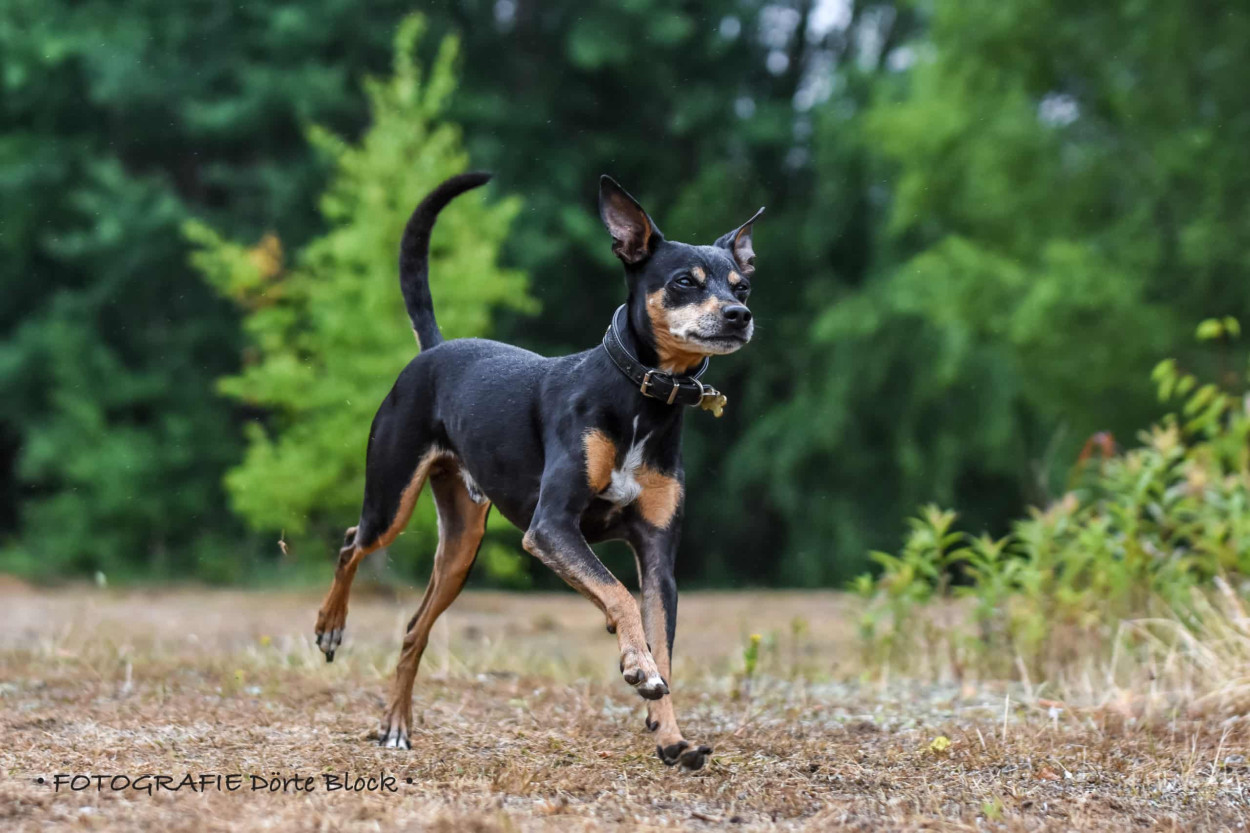
Majorca Ratter
USD $600-$800 Price Avg.
Hunting Dogs
Group
Purebred
Breed Type
Small
Size
14-18 years
Lifespan
Breed Information
| Group | Hunting Dogs |
|---|---|
| Popularity/Rank | 536 |
| Origin | Spain |
| Other Names | Ca Rater Mallorquí, Mallorcan Ratter, Ratonero Mallorquín |
| Breed Type | Purebred |
| Price (Avg.) |
USD $600-$800
How much does it cost to purchase a Majorca Ratter? The price of a Majorca Ratter will vary from breeder to breeder as well as from place to place. As a rough guide, you should expect to pay between $600 to $800 per Majorca Ratter if you purchase from a reputable breeder. Prices will be higher for show-quality dogs with a distinguished pedigree. Adult dogs who have already been trained may cost even more. It is usually less expensive to adopt a Majorca Ratter through a shelter. |
| Size | Small |
| Weight | 10-12 pounds (4.5-5.5 kg) |
| Height | 7-8 inches (18-20 cm) |
| Lifespan | 14-18 years |
| Recognized by |
Not recognized by the American Kennel Club. And Not recognized by FCI. |
| Purpose | Companionship |
| Date of Origin | 14th century |
| Ancestry | Unknown |
Appearance & Maintenance
| Coat | Smooth |
|---|---|
| Coat Colors | Black & Tan, Black tricolor, Brown & Tan, Brown tricolor |
| Grooming Level | |
| Shedding Level | |
| Eye Color Possibilities | Black, Brown, Amber, Hazel, Blue |
| Nose Color Possibilities | Black, Brown, Tan, Liver, Red, Blue, Fawn, Cream |
| Coat Color Possibilities | White, Cream, Fawn, Sable, Red, Black, Blue, Silver, Tan |
| Coat Length | Medium |
| Coat Density | Medium |
| Coat Texture | Smooth |
| Recommended Brushes | Slicker brush, pin brush, comb, shedding blade, mat rake, undercoat rake, dematting tool. |
| Brushing Frequency | 2-3 times per week |
Breed Characteristics
| Temperament | Companionable, Independent |
|---|---|
| Intelligent | |
| Trainability | |
| Playfulness | |
| Sensitivity Level | |
| Affection Level | |
| Social Interaction Required | |
| Barking | |
| Watchdog Ability | |
| Territorial | |
| Biting Force | Low |
| Mouthiness | |
| Impulse to Wander or Roam | |
| Prey Drive | |
| Adaptability | |
| Tolerates Being Left Alone | |
| Fighting Dog | Not really |
Good & Friendly with
| Apartment Life Friendly | |
|---|---|
| Stranger Friendly | |
| Kid-Friendly | |
| Cat Friendly | |
| Dog Friendly | |
| Office Friendly | No |
| Senior Citizens Friendly | |
| Pet Friendly | |
| Friendly with First Time Owners | No |
| Service Dog | Not really |
| Therapy Dog | Not really |
| Detection, Sniffer or Security Dog | Not really |
| Search and Rescue Dog (SAR) | Not really |
| Boat Dog | Not really |
| Cart Pulling or Drafting Dog | Not really |
Health Elements
| Health Issues | |
|---|---|
| Hypoallergenic | No |
| Energy Level | |
| Exercise Required | |
| Sleeping Required | |
| Weight Gain Potential | |
| Weather & Climate | Prefers average to warm weather conditions |
| Stinkiness | Medium |
| Drooling tendency | |
| Activity Level | Moderate |
| Rec. Walk Mileage Per Week | 10 miles |
| Minutes of Activity Per Day | 30-60 minutes |
Food & Costing
| Avg. Daily Food | 1/4 to 1/2 cup of high-quality dry food a day, divided into two meals. |
|---|---|
| Cups Per Day | 1/4 cup |
| Daily Cost | $20-$30 |
| Monthly Cost | $50-$100 |
Reproducibility
| Gestation Duration | 60-64 days |
|---|---|
| How often can the Majorca Ratter have a litter? | Once a year. |
| Litter Size | 3-7 puppies (Once a year.) |
Description
The Majorca Ratter is a small, energetic breed of dog that originated in the Balearic Islands of Spain. This breed is known for its intelligence and loyalty, making it an ideal companion for those looking for a loyal and loving pet. The Majorca Ratter has a unique appearance with its long, silky coat and pointed ears. It has a medium-sized body with strong legs and an athletic build.
The lifespan of the Majorca Ratter is between 12 to 15 years, depending on how well it is cared for. The size of the Majorca Ratter ranges from 8 to 10 inches tall at the shoulder and weighs between 6 to 8 pounds. The colors of this breed can vary from white to black or any combination in between.
The personality of the Majorca Ratter is friendly and outgoing, making them great companions for people who enjoy spending time outdoors or playing games with their pets. They are also very intelligent dogs that can be trained easily if given proper guidance and patience from their owners.
Majorca Rattlers are generally friendly towards other dogs, cats, children, and other animals when properly socialized as puppies. They do not have any aggressive tendencies but may bark at strangers if they feel threatened or uncomfortable in unfamiliar situations.
The temperament of the Majorca Ratter is active yet gentle; they love being around people but also enjoy having some alone time as well as plenty of exercise each day to keep them healthy and happy.
Health wise, this breed does not suffer from any major health issues but may be prone to minor ailments such as ear infections due to their long ears which can trap moisture inside them if not cleaned regularly enough.
In terms of adaptability level, the Majorca Ratter does best in an environment where there are plenty of activities available such as walks or playtime outside so that they can get enough exercise each day while still feeling safe within their home environment too.
Overall, owning a Majorca Ratter dog comes with many benefits such as having a loyal companion who loves spending time with you no matter what activity you’re doing together; they’re also intelligent enough to learn new tricks quickly which makes training them easier than some other breeds; lastly they’re small enough that they don’t require much space so even those living in apartments can own one without worrying about taking up too much room!
History
The Majorca Ratter is a small breed of dog that was once popular in Majorca, Spain. The breed is thought to have originated on the island of Majorca, where it was used to kill rats and other vermin. The Majorca Ratter was nearly extinct by the early 21st century, but has since been revived and is now gaining in popularity.
The exact origins of the Majorca Ratter are unknown, but the breed is thought to be descended from terriers brought to Majorca by English sailors in the 18th century. The English sailors were likely attracted to the island by its mild climate and abundance of seafood. The terriers they brought with them were likely used for hunting rats and other vermin on board ship.
When the English sailors left Majorca, they left behind a number of their terriers, which eventually became the ancestors of the Majorca Ratter breed. The breed became popular on the island and was used for ratting and as a watchdog. However, by the early 21st century, the breed had become nearly extinct due to a lack of interest from breeders.
In recent years, there has been a renewed interest in the Majorca Ratter breed, and a number of breeders have begun working to revive the breed. TheMajorca Ratter is now recognized by a number of kennel clubs and is gaining in popularity both in Spain and abroad.
Majorca Ratter Posts
Explore Majorca Ratter's photos, videos, activities, stories, and facts.




